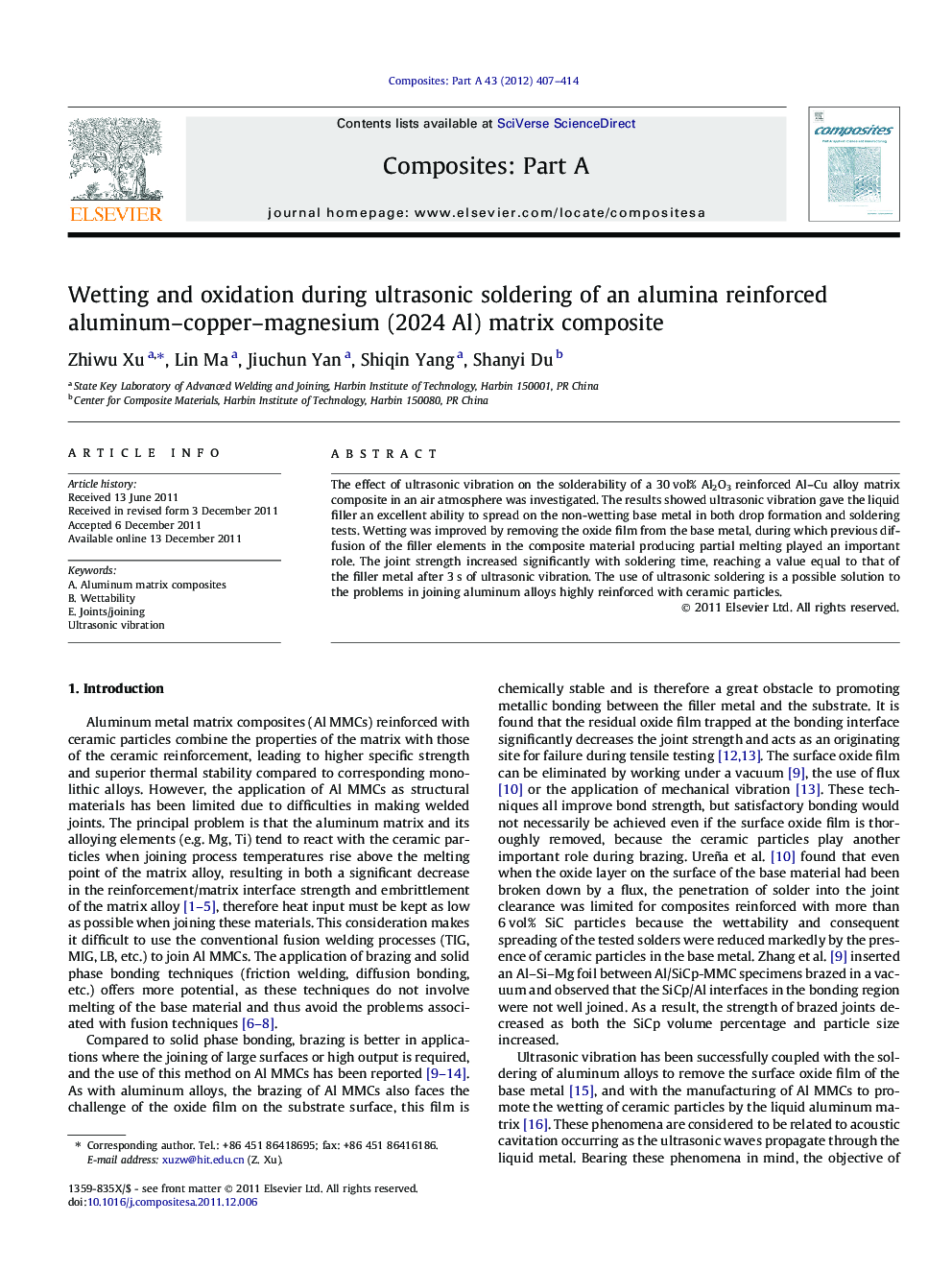| Article ID | Journal | Published Year | Pages | File Type |
|---|---|---|---|---|
| 1466837 | Composites Part A: Applied Science and Manufacturing | 2012 | 8 Pages |
The effect of ultrasonic vibration on the solderability of a 30 vol% Al2O3 reinforced Al–Cu alloy matrix composite in an air atmosphere was investigated. The results showed ultrasonic vibration gave the liquid filler an excellent ability to spread on the non-wetting base metal in both drop formation and soldering tests. Wetting was improved by removing the oxide film from the base metal, during which previous diffusion of the filler elements in the composite material producing partial melting played an important role. The joint strength increased significantly with soldering time, reaching a value equal to that of the filler metal after 3 s of ultrasonic vibration. The use of ultrasonic soldering is a possible solution to the problems in joining aluminum alloys highly reinforced with ceramic particles.
